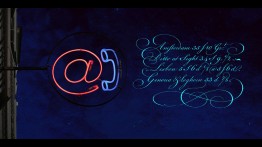The True Stories of @
Monday, February 26, 2024, 12:30 - 2:30pm

A quarter of a century ago, the spread of email made the ‘at’ sign an instant icon of digital communication and of modern times. But how did it end up on computer keyboards in the first place? The more evidence has been offered, the more uncertain and controversial its historical origins have become. A short book recently published by Marc Smith assesses the existing theories and their flimsy documentary basis, before adding much new material from ca 1400 to the present. It is now possible to chart the history of the @ sign throughout Europe and across technological shifts, from medieval notaries to Renaissance merchants and calligraphers, from Miguel de Cervantes to 18th-century grammar books and type specimens, and from the murderous accountant John Colt to early keyboards. The fact is that @ signs were used to abbreviate many words at different times and in different languages — but the life story of @ in its current form and function is entirely distinct and goes back to a simple one-letter word meaning both 'to' and 'at'.
Marc Smith is professor of Latin paleography, the history of writing in the Roman alphabet, at two leading academic institutions in Paris, the École nationale des chartes and the École pratique des hautes études (PSL), and the current president of the International Committee for Latin Paleography. His work focuses on the long-term evolution of writing in the West in its formal, technical, cultural, and cognitive dimensions, and his current project is a history of French and European writing models from the fifteenth to the early nineteenth century. He has lectured and taught widely in Europe and America, notably at the Newberry Library, the Getty Research Institute, and Columbia University.




